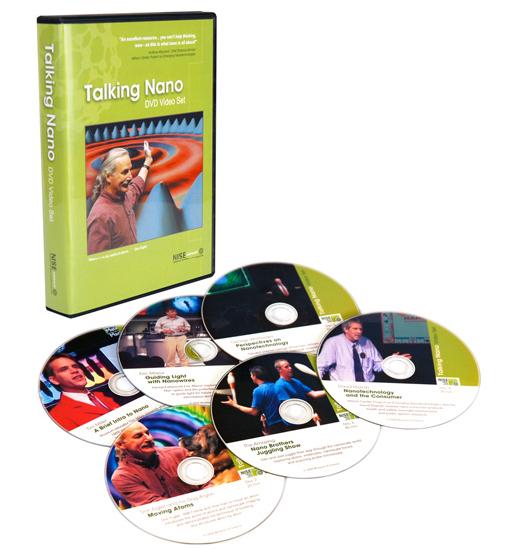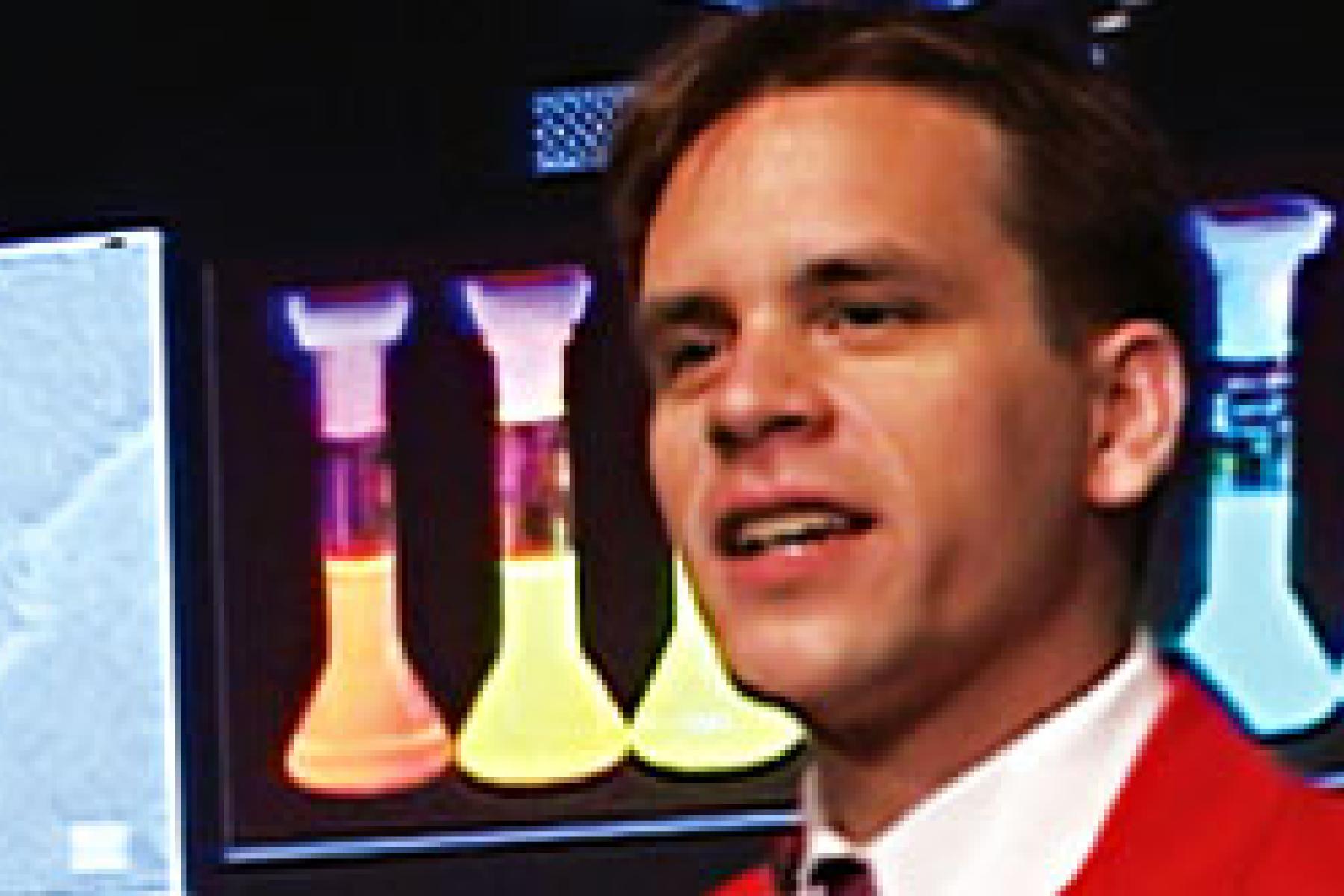DESCRIPTION
This 6-part video series features Don Eigler, George Whitesides, David Rejeski, Eric Mazur, Tim Miller, and, as a bonus, The Amazing Nano Brothers Juggling Show. It provides a basic Nano 101 introduction to nanotechnology, potential applications, implications, and impacts. Designed for classroom, informal, and professional development use, the videos are tightly edited with close-ups and illustrations.
The www.talkingnano.net website includes a scene-by-scene outline of content areas and ties to U.S. and Massachusetts education standards.
- 1. A Brief Intro to Nano: Museum educator Tim Miller presents physicist Richard Feynman’s prescient 1959 vision framing four key areas of impact for future nanotechnologies: information, imaging, materials, and machines. 20 min
-
2. Don Eigler and his Dog Argon: Moving AtomsL Don Eigler, IBM Fellow and “the first man to move an atom,” introduces the world of atoms and nanoscale imaging, and demonstrates his technique of building tiny structures atom-by-atom. 24 min.
-
3. Guiding Light with Nanowires: Harvard physicist Eric Mazur explores reflection, refraction, fiber optics and the potential uses of nanowires to guide light for future computing and information technologies. 22 min
-
4. Nanotechnology and the Consumer: Wilson Center Project on Emerging Nanotechnologies director David Rejeski reviews nano consumer products, health and safety oversight mechanisms, and public opinion research. 30 min.
-
5. George Whitesides: Perspectives on Nanotechnology: Harvard chemist George Whitesides defines nanotechnology and shares personal, historical, scientific, and societal perspectives on future nanotech applications and their potential impacts. 55 min
-
6. The Amazing Nano Brothers Juggling Show: Join Dan and Joel as they juggle their way through the nanoscale world, exploring atoms, molecules, nanoscale forces, and scanning probe microscopy, sometimes from atop 7-foot unicyles! A dramatic and humorous treatment of nano and materials science basics. 40 min.
DESCRIPTION
This 6-part video series features Don Eigler, George Whitesides, David Rejeski, Eric Mazur, Tim Miller, and, as a bonus, The Amazing Nano Brothers Juggling Show. It provides a basic Nano 101 introduction to nanotechnology, potential applications, implications, and impacts. Designed for classroom, informal, and professional development use, the videos are tightly edited with close-ups and illustrations.
The www.talkingnano.net website includes a scene-by-scene outline of content areas and ties to U.S. and Massachusetts education standards.
- 1. A Brief Intro to Nano: Museum educator Tim Miller presents physicist Richard Feynman’s prescient 1959 vision framing four key areas of impact for future nanotechnologies: information, imaging, materials, and machines. 20 min
-
2. Don Eigler and his Dog Argon: Moving AtomsL Don Eigler, IBM Fellow and “the first man to move an atom,” introduces the world of atoms and nanoscale imaging, and demonstrates his technique of building tiny structures atom-by-atom. 24 min.
-
3. Guiding Light with Nanowires: Harvard physicist Eric Mazur explores reflection, refraction, fiber optics and the potential uses of nanowires to guide light for future computing and information technologies. 22 min
-
4. Nanotechnology and the Consumer: Wilson Center Project on Emerging Nanotechnologies director David Rejeski reviews nano consumer products, health and safety oversight mechanisms, and public opinion research. 30 min.
-
5. George Whitesides: Perspectives on Nanotechnology: Harvard chemist George Whitesides defines nanotechnology and shares personal, historical, scientific, and societal perspectives on future nanotech applications and their potential impacts. 55 min
-
6. The Amazing Nano Brothers Juggling Show: Join Dan and Joel as they juggle their way through the nanoscale world, exploring atoms, molecules, nanoscale forces, and scanning probe microscopy, sometimes from atop 7-foot unicyles! A dramatic and humorous treatment of nano and materials science basics. 40 min.
TRAINING VIDEOS
OBJECTIVES
LEARNING GOALS
The nature, origin, and range of nanotechnology
Understanding size and behavior at the nanoscale
Current and potential applications of nanotechnology and their impacts
Imaging at the nanoscale
Basic structure of matter
Harnessing special properties of matter at the nanoscale
Motivation for nanoscale research
Selected societal implications of nanotechnology
Selected consumer safety and regulatory issues of nanotechnology
How researchers conceive and conduct their efforts
NANO CONTENT MAP
Nanometer-sized things are very small, and often behave differently than larger things do.
Scientists and engineers have formed the interdisciplinary field of nanotechnology by investigating properties and manipulating matter at the nanoscale.
Nanoscience, nanotechnology, and nanoengineering lead to new knowledge and innovations that weren't possible before.
Nanotechnologies—and their costs, utility, risks, and benefits—are closely interconnected with society and with our values.
DOWNLOAD FILES
Credits
Talking Nano was filmed at and produced by the Museum of Science, Boston, in association with the NSF Center for High-rate Nanomanufacturing (NSF EEC-0425826), the Harvard NSF Nanoscale Science and Engineering Center (NSF PHY06-46094), the Wilson Center Project on Emerging Nanotechnologies, and the NSF Nanoscale Informal Science Education Network (ESI-0532536).
This linked product was created by another institution (not by the NISE Network). Contact owning institution regarding rights and permissions.





